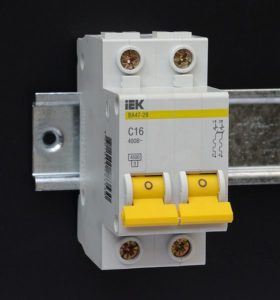
Just like a breaker box in your house, a circuit breaker shuts off juice to the market- Image Credit: Kae (CC by SA-3.0)
Circuit breakers, also known as collars, are measures approved by the SEC designed to temporarily halt trading during a massive sell-off period in order to discourage investor panic. the halt gives investors time to cool off and evaluate their options On the NYSE, circuit breakers were first put into place after the Black Monday crash of October 1987 in which the Dow Jones Industrial Average dropped 22.6% in one day. They were revised again after the flash crash of May 2010. Currently, circuit breakers in the NYSE trigger in response to drops in the S&P 500 Index and occur in three levels. If the S&P falls to 7% below its previous close before 3:25 pm EST, then trading is halted for 15 minutes. If the index falls another 13% before 3:25 pm, Level 2 is triggered, halting trading for another 15 minutes. Finally, if the index falls another 20% after re-opening, trading will be halted for the remainder of the day. Individual stocks can also have circuit breakers if they move above or below a certain threshold.

Recent Comments